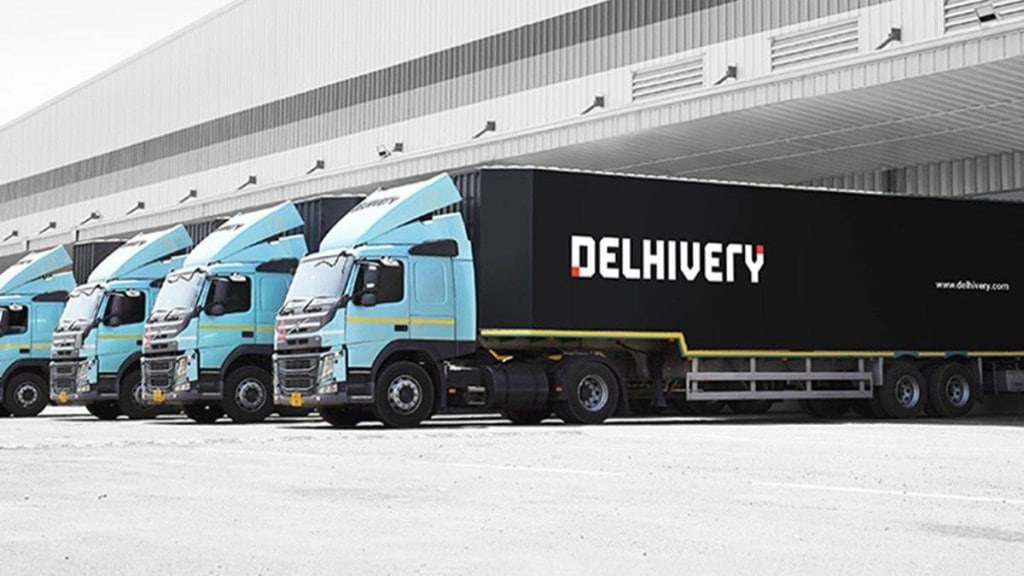Delhivery is on a roll. The integrated logistics player delivered its first profit in the September quarter, posting an adjusted operating profit of Rs 92 crore and a net profit of Rs 16 crore on annualised revenue growth of 20%. The company is a clear frontrunner in the third-party express parcel delivery service space commanding a share of 40%.
Express consignments delivered in Q3FY24 topped 200 million. As Shrinidhi Karlekar of HSBC observed, the growth in shipments against the backdrop of weak consumption was impressive. “It reinforces our confidence in the structural growth opportunities for e-commerce logistics and Delhivery’s ability to capture that profitably,” Karelkar said.
Catalysed by new channels such as ONDC, the e-commerce space is tipped to grow at an annual rate of 15-20%. While volumes from the metros are being driven by both new customers and increased frequency per user, in the Tier2 and Tier 3 towns they are being fuelled largely by new shoppers.
How big the opportunity is can be gauged from the fact that the average number of packages per person per year is just four in India today compared with about 70 in China. Macquarie Research said shipments can go up 5-fold to 20 billion parcels with third party logistics (3PL) players gradually taking away share from in-house or captive logistics providers. As Jaffrey Thomas, Partner PwC, says, sectors like auto, pharma, organised retail, e-commerce or industrial goods are willing to pay the right price for such services since they need measurable and reliable service levels.
Delhivery’s infrastructure and network are also enabling it to cash in on the rising demand in the heavy parcels segment. Co-founder Sahil Barua believes the company’s ability to deliver odd form factors and heavy parcels are a key differentiator. “Typical light parcel networks are not able to handle heavy products because they require a fundamentally different infrastructure and mechanism,” Barua says. He adds that Delhivery’s ability to blend freight and parcel is what gives it the ability to gain share in heavy segment where the volumes are going up secularly. “Continuing to grow volumes in this segment is a key strategic focus area for us,” Barua says.
Delhivery is also better-placed vis a vis the competition because its revenue mix –between B2B and B2C—is more diversified. Moreover, it is relatively less dependent on the top three e-commerce players with small customers accounting for a healthy 25% of the express parcel business. Both Xpressbees and ECom Express, which are half the size of Delhivery have seen a meaningful deterioration in profitability in periods of strong growth, say Aditya Mongia and Deepak Krishnan at Kotak Institutional Equities.
Moreover, there’s scope to expand operating leverage. “We estimate that around one-third of Delhivery’s operating expenses will not necessarily scale in tandem with revenue growth,” Aditya Suresh of Macquarie believes.
The investments needed to gain share and grow in the PTL business, such as the integration of the network and the trailerisation strategy, are largely behind it. Seven quarters back the company drove 72 bn cubic ft km, of which 20% came from trailer trucks (TT) on its network. In the last quarter, it drove 128 bn cubic ft km, of which some 63% driven on its TTs. As such, the TT percentage has tripled on an expanded base.
“TTs are core to our growing PTL business, they allow us to haul a lot more load a lot more efficiently and we will continue to invest in building the TT network,” says Barua.
He points out it’s not merely a question of buying more trucks but how to integrate them with the mega gateways and making the gateways more productive.
The PTL story is one of a long period of consolidation in the market since organised players today have a share of less than 45% of express PTL volumes with the share of the top 3 at less than 20%. As such, more than the annual growth in demand of 8-9% what’s important is that everyone has room to grow. Macquarie’s Suresh estimates that one percentage point of market share can boost the compounded annual growth in revenue by 200-300 basis points. “We will invest in a larger sales force on the ground. We have expanded sales force to multiple cities across states and will do more in Q4,” Barua says.
Scaling up is a must. As experts point out,volumes are smaller than they were before the merger with Spoton. In this context, the company says a bigger sales force will help significantly expand the base of SME and smaller customers; historically, this has been an under-served segment and a big LTL opportunity. Delhivery is also using more of the bigger 40 ft trucks which can cut line haul costs by about 20%. In fact, these higher carrying capacity trucks used in its line-haul operations, was a major factor that drove up its ebitda margin in Q3 to 5% from a negative 4% in the year-ago quarter.
Analysts say a rising share of larger trucks has helped Delhivery’s line haul expenses become the ‘lowest in industry’. “We have the lowest cost network so we have the freedom and can price aggressively and uniformly,” Barua claims. PWC’s Thomas, however, points out that at some point 3PL players may get outpriced in the cargo segment where the need for value addition is limited and customers are cost conscious. For the moment though there aren’t any speed-breaker, the ride promises to be a smooth one.

